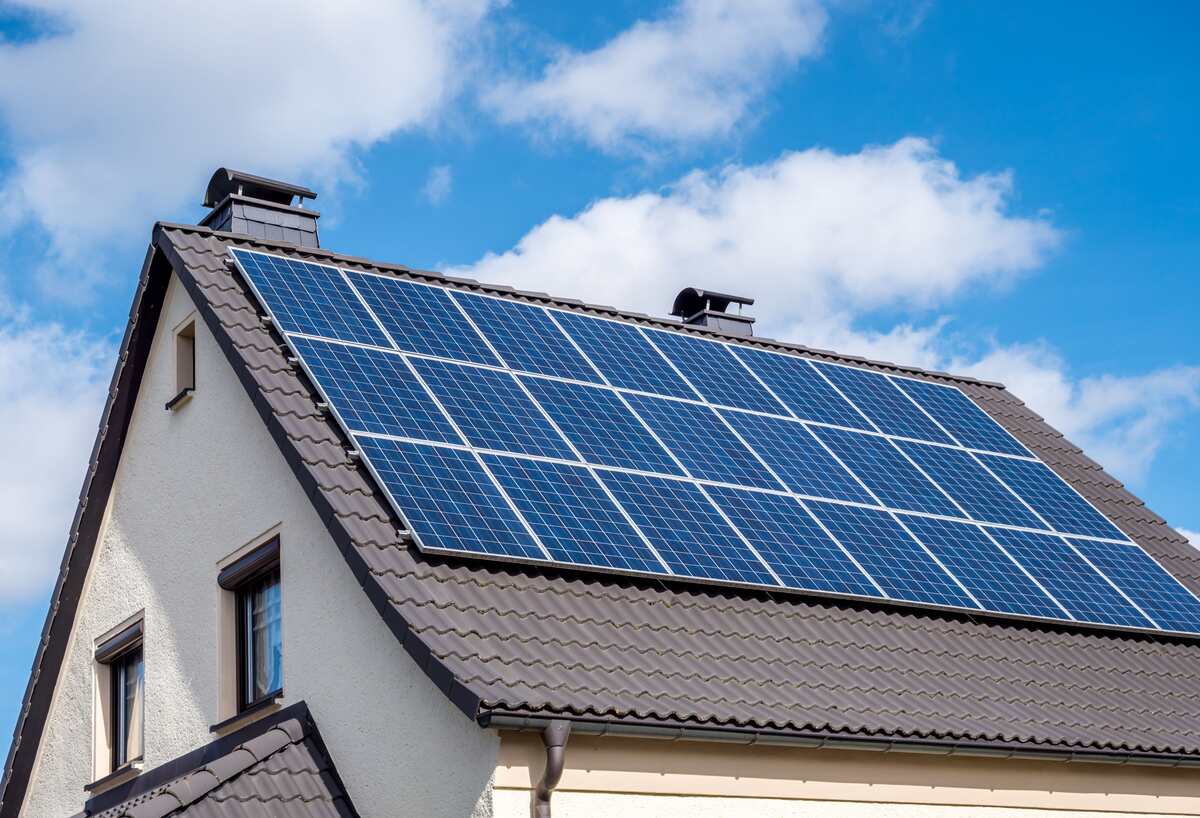
Hybrid Solar System
A Hybrid Solar System combines solar power generation with an energy storage solution (such as batteries) and, often, a secondary power source (like the electrical grid or a backup generator). It allows for both grid-tied and off-grid power solutions, enabling greater flexibility in energy management. The primary goal of a hybrid system is to ensure continuous power supply, even when sunlight is insufficient, by drawing energy from stored reserves or alternative sources.
1. How a Hybrid Solar System Works:
A hybrid solar system integrates solar panels, batteries, inverters, and, often, a grid connection. Here’s how it typically operates:
Daytime (Sunlight Available): Solar panels generate electricity. This electricity powers your home directly, with any excess stored in batteries or fed back into the grid, depending on system configuration.
Nighttime (No Sunlight): When there is no sunlight, the system draws power from the batteries (if enough energy was stored) or, if batteries are depleted, from the grid or backup generator.
Cloudy or Rainy Days: On days with insufficient sunlight, the system prioritizes energy from the batteries and then switches to the grid or other backup sources as needed.
2. Components of a Hybrid Solar System:
a. Solar Panels:
Function: Capture sunlight and convert it into direct current (DC) electricity.
Types: Monocrystalline, polycrystalline, or thin-film solar panels, depending on the efficiency and cost requirements of the system.
b. Solar Inverter (Hybrid Inverter):
Function: Converts the DC electricity generated by solar panels into alternating current (AC) electricity, which is used by most household appliances.
Dual Purpose: In a hybrid system, inverters also manage the charging and discharging of batteries, controlling the flow of energy between the solar panels, battery bank, and the grid or generator.
c. Battery Bank:
Function: Stores excess electricity generated during the day for use at night or during periods when solar production is low.
Types of Batteries:
Lithium-Ion Batteries: Most common in hybrid systems due to their efficiency, long life, and high energy density.
Lead-Acid Batteries: Less expensive but bulkier and with shorter lifespans than lithium-ion batteries.
Flow Batteries: Emerging technology that offers long-lasting energy storage, though not yet as widespread as lithium-ion.
Size: The battery capacity is typically measured in kilowatt-hours (kWh), and sizing depends on the household or facility’s energy consumption patterns and backup requirements.
d. Charge Controller:
Function: Regulates the flow of electricity to and from the batteries to prevent overcharging or deep discharge, both of which can shorten battery life.
Type: In many hybrid systems, this functionality is built into the hybrid inverter.
e. Grid Connection (Optional):
Function: Hybrid systems often connect to the grid, allowing users to sell excess electricity back to the utility (via net metering) or draw power from the grid during periods when the batteries are depleted.
f. Backup Generator (Optional):
Function: Provides a secondary source of power when neither solar energy nor stored battery power is available. This is useful for off-grid systems or during extended periods of low sunlight.
g. Monitoring and Control System:
Function: Allows for real-time monitoring of the system's performance, including solar production, battery status, and energy consumption. Many systems come with apps or web interfaces that allow users to track energy use and optimize their solar system.
3. Types of Hybrid Solar Systems:
a. Grid-Connected Hybrid Systems:
Description: These systems are connected to the utility grid but also have battery storage. They provide energy during power outages or when grid electricity is expensive.
Features:
Energy from solar panels powers the home, with excess energy stored in batteries or exported to the grid.
During the night or cloudy days, energy can be drawn from the batteries or the grid.
If there is a power outage, the system automatically switches to battery power, providing a seamless supply of electricity.
Some systems allow for time-of-use (TOU) optimization, where stored battery energy is used during peak utility rate periods to reduce electricity costs.
b. Off-Grid Hybrid Systems:
Description: These systems are not connected to the grid and rely solely on solar panels and battery storage for energy supply. Backup generators are often included to provide power when battery reserves are low.
Features:
Suitable for remote areas without access to grid electricity.
Batteries are the primary energy source during non-sunlight hours or cloudy periods.
A generator can serve as a backup power source when batteries are depleted, ensuring a reliable energy supply.
c. Dual Hybrid Systems:
Description: Combines both grid-connection and off-grid capabilities, allowing for grid independence while also benefiting from backup options and grid-tied energy sales when available.
Features:
Primarily operates off-grid, but connects to the grid during periods of high demand or low solar generation.
Can provide both energy independence and access to net metering when required.
4. Advantages of Hybrid Solar Systems:
a. Reliable Power Supply:
Hybrid systems offer a continuous power supply by using solar energy during the day and stored battery energy at night or during blackouts.
b. Energy Independence:
Homeowners or businesses can reduce reliance on the utility grid, especially in regions with frequent power outages or high electricity prices.
c. Cost Savings:
Hybrid systems allow you to avoid peak grid electricity prices by using stored solar energy during peak demand times. Excess energy can also be sold to the grid, generating additional savings.
d. Reduced Carbon Footprint:
By combining solar energy with storage, hybrid systems reduce the dependence on fossil fuel-generated electricity, contributing to lower greenhouse gas emissions.
e. Backup Power:
Provides backup power during blackouts, ensuring that critical loads (like refrigerators, medical equipment, or lighting) remain powered.
